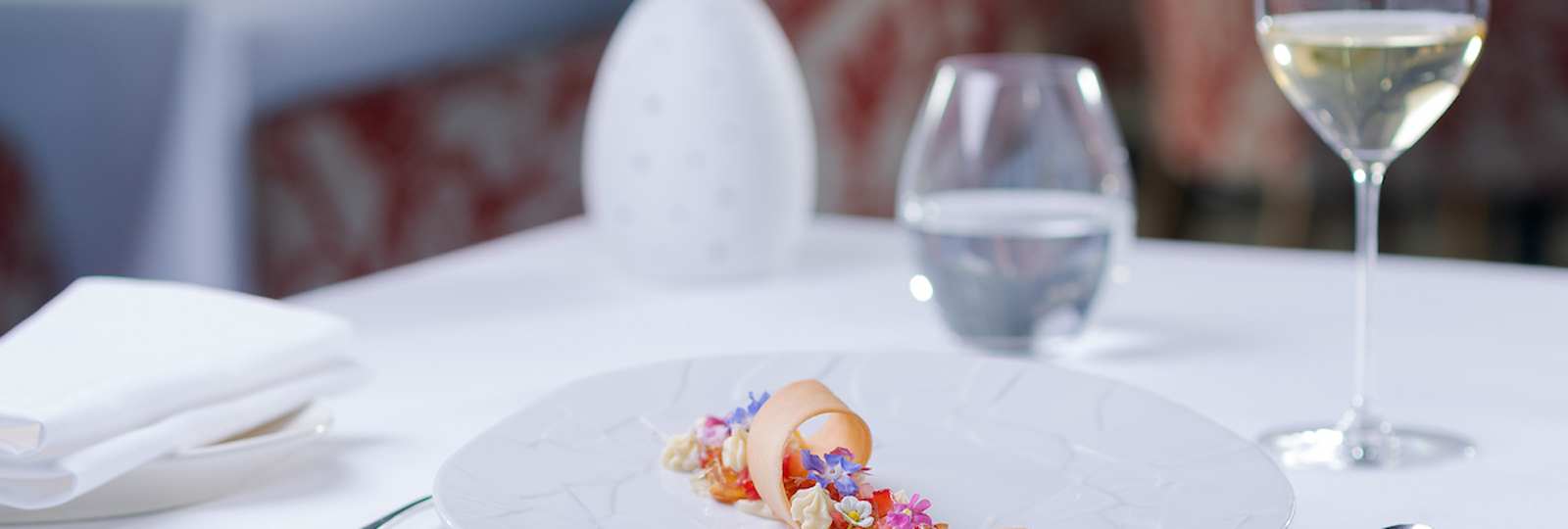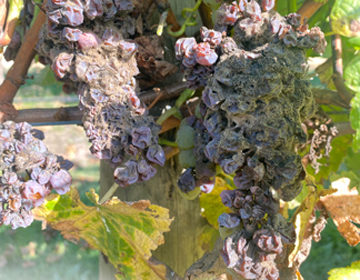Botrytis cinerea, otherwise known as ‘Noble Rot’, can be a favourable fungus infection, when harnessed to produce dessert style wine.
Grapes become infected and then dehydrate, resulting in a natural sugar level concentration much higher than would usually be present in normal grape ripening.
The Botrytis spores also deliver components into the grapes that change the character of the resultant wine, increasing complexity and expression beyond varietal notes into a realm reminiscent of honey, apricots and marmalade.
To produce a Botrytised wine takes a lot of planning and meticulous work in the vineyard.
Grapes
Not all grapes are created equal, and not all grapes are suitable for wine production influenced by Botrytis cinerea.

The ideal grape is one with a thin skin that also has tight grape bunches. When the skin is thin it facilitates the fungus spore piercing the skin to access the sugars inside. The tighter the bunches, the faster the fungus can spread as the berries are in direct contact with their neighbours, greatly assisting the reproduction of the spores throughout the bunch.
Historically the most ideal grapes for Botrytis cinerea are Semillon, Sauvignon Blanc and Muscadelle in the Sauternes and Barsac appellations of Bordeaux; Riesling for Trockenbeerenauslese in Germany; Chenin Blanc in the Loire Valley and Furmint for Tokaji production in Hungary.
Grapes that are allocated for Botrytis production are managed very differently to our other grapes, even of the same variety, that are destined for our Estate wines.
Vineyard
In the vineyard, Botrytis cinerea requires the perfect combination of humidity and warmth for the fungus to take hold and infect the desired parcel of allocated grapes correctly and evenly. The Yarra Valley is generally too cool a region to consistently and reliably achieve this infection year-on-year so it is a rarity for the viticultural stars to align and allow us the luxury of producing this hedonistic wine style.
In order to promote Botrytis spore development and proliferation in specified parcels of grapes, the aim is to maximise humidity within the grapevine canopy. This differs from our general grape production where we are trying our best to minimise humidity and promote air flow and dappled sunlight onto the developing grape bunches.
We rely on natural inoculation and we try to manage the conditions to promote its spread. It’s all about management, timing, crossing of fingers and an awful lot of luck that the season will provide the conditions necessary for success.
2020 Vintage
The 2020 vintage provided unusually ideal mid to late season growing conditions to facilitate production of a Botrytis-influenced sweet Sauternes-style dessert wine from our Maroondah Highway vineyard.

This time-honoured wine style brings an unctuous expression to our mature-age Semillon vines which is enhanced further through the introduction of small but essential complexing elements of late-harvested Sauvignon Blanc for restrained acidity with Muscadelle and Sauvignon Gris for perfume and weight.
Suitably Botrytised bunches were painstakingly hand-selected in the vineyard on 28 March 2020, before further sorting in the winery..
2020 Mélange Botrytis
A blend of 63% Semillon, 33% Sauvignon Blanc, 3% Muscadelle and 1% Sauvignon Gris, this is a Sauternes-style dessert wine which is rich and hedonistic, luscious and viscous yet elegant and structured. Aromas of golden syrup dumplings, barley sugar, crystallised ginger, beeswax andorange marmalade meld with flavours of orange poppy seed cake, cumquat and cardamom panna cotta.
Usually paired with desserts, our Botrytis is also a great accompaniment to pâté, foie gras, blue cheese or comté.




